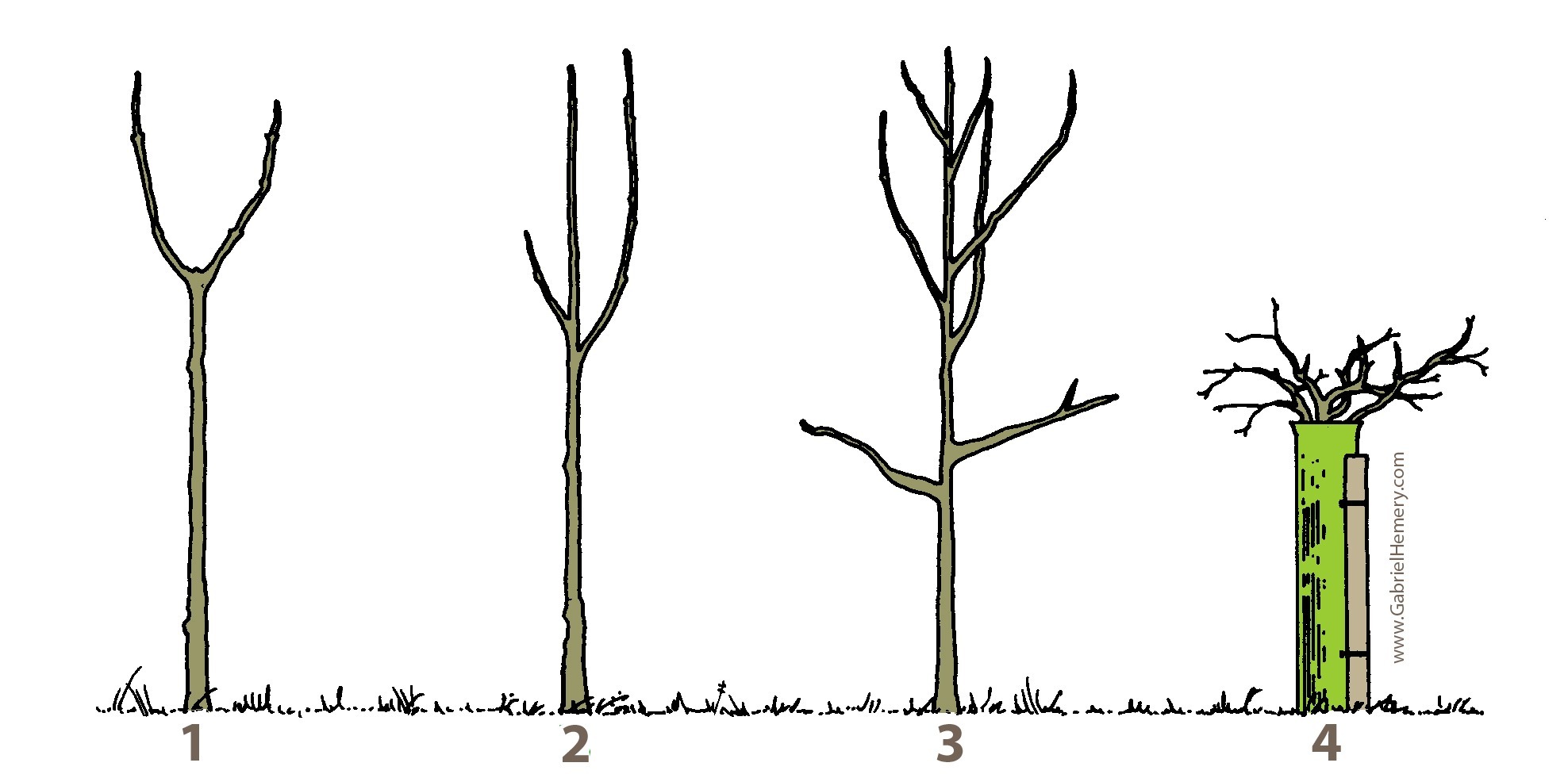Young forest trees often require some form of ‘formative’ shaping or pruning during the first 5-10 years after planting. I co-wrote a practical guide on this subject for Woodland Heritage, and created the artwork that I’ve reproduced here.

Young trees may require pruning for a variety of reasons, including damage from perching or pecking birds, wind or frost, salt damage, browsing mammals, or even the effect of tree shelters. The species of tree also has a bearing as some are more susceptible to damage from these or other causes.
Gabriel Hemery
In the scenarios above:
- This is a classic fork produced in a tree species that has opposing buds, such as ash Fraxinus excelsior. If the terminal bud is damaged the two dormant buds immediately below it on the stem will come to life producing two branches. Remove one of these when only a year old and the remaining leader will quickly take over.
- Often a young tree may have more than one leader, and sometimes it is difficult to decide which one you may want to promote. Choose the healthiest and most vigorous leader and remove the others.
- Sometimes a tree will have large branches that if left alone too long will leave large wounds when they are eventually removed. Remove large branches, ideally before they are 3cm (1″) in diameter.
Some branches may be steep and potentially compete with the main leader. Remove steep and competing branches. - Occasionally a tree may be of such poor form that you don’t know where to start. Sometimes treeshelters can cause these sort of deformities. The first decision is whether it is worth doing anything. If there is a better looking nearby tree that will eventually takes its place, walk on and let it be. If there’s no choice, then you could consider ‘stumping’ – cutting the young tree’s stem right through at about 5cm (2″) above the ground. Consider stumping the tree if you have no alternative.
 This work is licensed under a Creative Commons Attribution- NonCommercial- NoDerivs 3.0 United States License.
This work is licensed under a Creative Commons Attribution- NonCommercial- NoDerivs 3.0 United States License.
